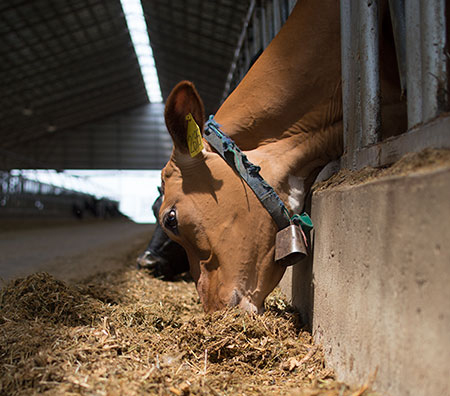
Ruminant animals are engineered to consume forage, and feeding a high percentage of the dairy diet as forage provides many potential benefits. At World Dairy Expo last week, Kenneth Kalscheur, dairy scientist with the U.S. Dairy Forage Research Center in Madison, Wis., discussed the benefits as well as the challenges of high-forage diets.
High-forage diets provide for higher milk components, maintenance of normal rumen function, lower culling rates, a reduced need for purchased feed, and improved income over feed costs. While it’s true that these high-forage diet metrics are desirable, they come with the realization that more forage needs to be harvested and stored; further, forages need to be rigorously analyzed for frequent ration adjustments as forage type or quality changes.
Kalscheur emphasized that consistent and high forage quality is the key to feeding diets containing copious amounts of forage. If quality is not sufficient, then a desirable situation changes to one of reduced feed intake, depressed milk production and lower profitability. Both the digestibility of the forage and its rate of passage govern just how much a cow can consume. High-forage diets are only effective if high-forage intakes are maintained by an adequate rate of passage through the digestive tract.
In his closing comments, Kalscheur summarized the important considerations, as developed by some of his dairy nutrition colleagues, for feeding high-forage diets. They are:
2. Monitor forage inventory. High-forage rations may demand a change in cropping or feed sourcing strategies.
7. The total mixed ration (TMR) mixer rises in level of importance and function. Rations are generally bulkier and this may create the need for more mixes per day or a larger mixer.

